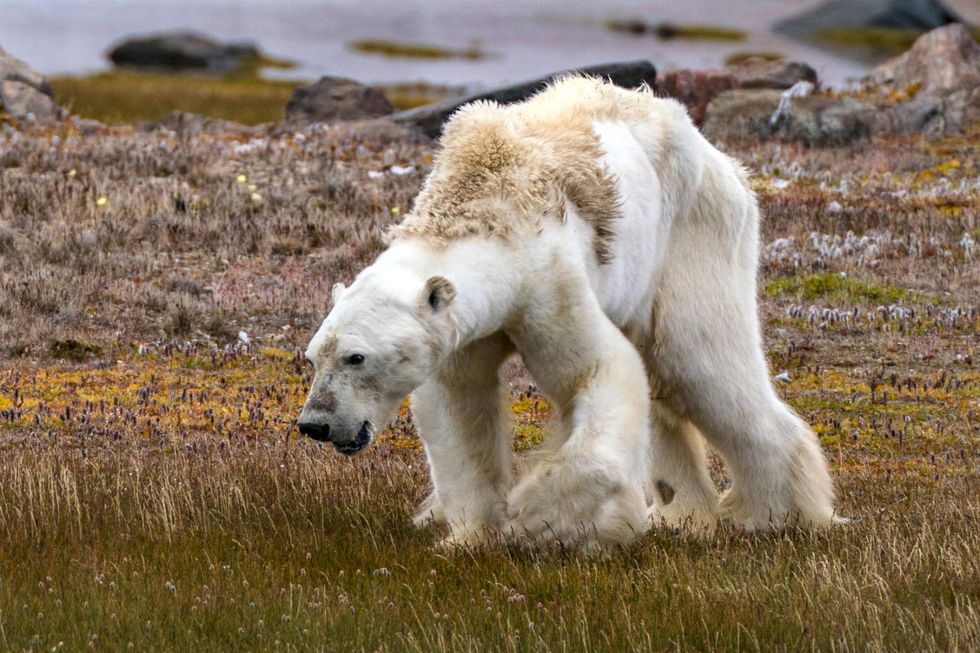Scrolling through my Facebook feed, I recently saw a reactionary article posted by National Geographic. It was in response to a video posted in early December of last year chronicling a starving polar bear searching for food on iceless land. Amid much public outcries of dismay, the recently published article recounted what the photojournalists would've done differently, looking back now. That begged the question of the role that photojournalists play in telling a story. Or, rather, their roles in changing the ending of a story.
For this piece, I was originally going to compare several photographs including The Terror of War, The Face of AIDS, and Alan Kurdi. These photos gripped the world in their intensity, poignancy, and raw, unadulterated emotion. That being said, however, they all differed from the video of the starving polar bear. These photographs documented horrific, heart-wrenching moments over which the photographer had no control. They could not prevent the napalm burns on an unclothed child, nor could they stop the progression of a then fatal disease, or resuscitate a drowned infant. The world spins onward. Journalists do not pick up the broken pieces and rarely can prevent the fractures of a shattering world around them. Rather, they document the messes that have been made.
However, there is one photograph known the world over that can be appropriately compared to the video of the emaciated polar bear. It is a textbook example of ethicality in photojournalism and the responsibility that befalls any person who documents some of the most horrific moments of an individual's life. Shown below, the image is entitled "Starving Child and Vulture."
Captured in 1993 by photographer Kevin Carter, the image depicts a Sudanese child who had collapsed on his way to a feeding center, with a plump vulture lingering nearby. Carter and a band of photographers, collectively known as the Bang-Bang Club, had all been tasked with documenting apartheid in South Africa and instructed not to touch any of the victims because of disease. So, instead of helping the slumped toddler, Carter waited for 20 minutes in hopes of capturing a better shot before chasing the vulture away. He then reportedly watched the child walk away, smoked a cigarette, wept, and prayed.
The New York Times ran the photograph, which won Carter a Pulitzer. Amid criticisms at his selfishness in not lending aid to the child, Carter died by suicide in 1994. In his suicide note, he wrote, “I am haunted by the vivid memories of killings & corpses & anger & pain.”
In Journalism 1001 at the University of Minnesota, it is drilled into the heads of aspiring journalists to be objective when possible: we are to tell the story, not become a part of it. But, complete objectivity is an unachievable ambition. It is of the utmost importance for consumers of media to realize that journalists are not superheroes -- capes often get in the way of the cameras and equipment that photojournalists require. We are storytellers, not knights in shining armor. Unfortunately, not every story can have a happy ending. The videographers who captured the starved polar bear had no food to lend; and any food they did have would have only prolonged the horrid inevitability of fate. We must not hold photojournalists to a higher standard than we hold ourselves. Humans are only humans, and, as such, will make mistakes and regret inaction. It is a sad inevitability of life. In a world of black and white, where one color represents goodness and the other evil, we are destined to experience every hue of grey.
That being said, however, we are humans first and journalists second. One of the pinnacles of Journalism Ethics, as pointed out by the SPJ, is to minimize harm. That means that we feed the child in front of us. We hug those in need of a friendly gesture. We show humanity, the kind our photographs can often look devoid of. There is no narrative on this planet free of bias; that being said, let that bias be one of love and compassion for all that inhabit our world. When we look back in retrospect, we want it to be a fond memory, not a stinging regret. To tell a story is an act of valor, but to intervene is an act of heart. We must realize that a picture is worth a thousand words, but an act of kindness is worth ten thousand more.























